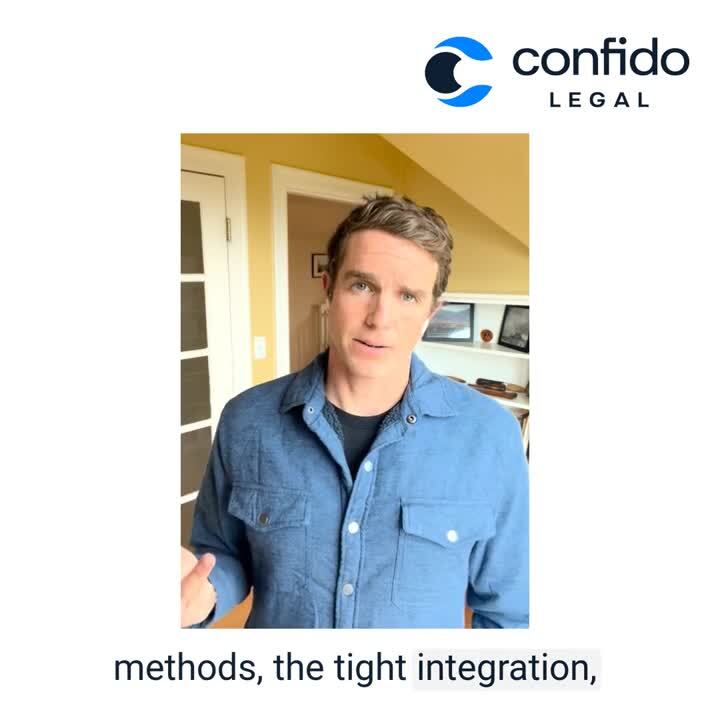Below you will find key technical and sales/marketing resources to help you build and achieve adoption of your embedded payments features.
Where can I find API documentation?
API docs, including sample applications, developer guides and more can be found here: https://docs.confidolegal.com/
How do I login to my Confido partner account?
Login to your production partner account at:
https://app.gravity-legal.com/
For your sandbox account, login at: https://app.sandbox.gravity-legal.com/
Here you will find
- A list of all of your firms and their application statuses
- A list of all firm users with the ability to proxy as those users
- Webhooks information
- API Tokens
- Field to update your partner logo
What features do some of our competitors have?
Get the latest info on competitors with integrated payments offerings. Here you will find pricing, features and more competitive intelligence.
This information is constantly changing, so use this information as a rough guide only.
To access, click this link and request access to this document.
How can I help my firms get through onboarding quickly?
This video goes over how to speak to the Confido Legal onboarding process before a firm signs up.

For more details on why we are required to collect certain information in the onboarding process, see this article.
What's the most important question to ask in a payments discovery call with a law firm?
This is the golden question we ask in every discovery call:

What areas of value should I focus on in the sales process?
We can't forget that electronic payments are expensive. Each firm that implements these payment methods should be getting value from electronic payments, and that value should outweigh the costs.
In this video, we dive into the four main areas of value firms can get out of electronic payments. These are the four main areas to focus your qualifying questions in the sales process:
-
Improved Collection Rate: This measures the amount collected divided by the amount invoiced. Improving the collection rate boosts revenue on a cash basis and significantly increases profit, as firms are collecting revenue for which costs have already been incurred.
-
Improved Cash Position: By shortening the accounts receivable cycle, firms receive payments faster, resulting in more available cash.
-
Enhanced Client Experience: Studies show that in many consumer practice areas, clients prefer law firms that accept electronic payments. It improves convenience and satisfaction for clients.
-
Increased Automation and Reduced Administrative Work: Electronic payments streamline payment requests and processing, saving time and effort for administrative tasks.
While not every firm may experience all four benefits, they should aim to gain at least one. It's crucial to ensure that the return from these benefits outweighs the cost of electronic payment systems.
By focusing on these four areas, you can ensure firms derive tangible value from accepting electronic payments.

What can I do if a firm is hesitant to start accepting electronic payments?
For firms that haven't previously accepted electronic payments, haven't had an integrated payments solution, or are unable to think of improvements they would like to see at the firm level, try switching the conversation from the firm to the client.

How to address the payment processing fee savings conversation
Oftentimes the cost and fees associated with payment processing are hot topics in a payments discovery call. Here are some tips for addressing this part of the conversation.

How do I reframe the ACH conversation and handle pricing objections?
The question often arises: How do you sell ACH when it's readily available through banks or third-party processors for free or at low cost?
Contrary to common belief, ACH as we have built it is not a commodity. In this video, we discuss how we market and sell ACH or what we term our Fast Transfers platform.
1. Reframing the Discussion: When law firms consider ACH, they typically view it through two lenses: their bank's ACH acceptance and third-party payment processors like bill.com or LawPay. Our strategy revolves around breaking these associations and creating a new category of payment method and avoiding the use of terms like ACH or eCheck in our sales and marketing efforts. Instead, we emphasize same-day bank transfers or Fast Transfers to shift perceptions.
2. Establishing Credibility with Five Key Benefits: We've earned the right to create a new tender type as a result of these five benefits that our platform offers over standard ACH acceptance:
-
- High Transaction Limits: We have firms approved up to $450,000 per transaction, a significant improvement over traditional limits.
- Faster Deposits: Funds reach firms' bank accounts often more quickly than wire transfers.
- Control Over Payment Methods: Firms can choose preferred payment methods for different scenarios, enhancing flexibility.
- Integration: Our platform integrates into firms' billing workflows, streamlining processes.
- Client Convenience: Simplified checkout with Fast Transfers reduces friction for clients, leading to increased usage.
When qualifying a firm in the sales process, all five of these benefits may not be relevant to that particular firm. You can ask questions around the areas above to identify which are most valuable to each specific firm.
3. Addressing Cost Concerns: While some may raise concerns about the perceived costliness of our platform compared to traditional ACH methods, our data demonstrates significant savings. By migrating transactions from costlier credit card methods to Fast Transfers, firms can realize substantial savings, often outweighing any perceived increase in costs.
In response to pricing reservations, we employ a two-question strategy:
- Understanding the Current Process: We ask about the existing ACH acceptance process, highlighting its inefficiencies.
- Assessing Payment Volume: We ask about the percentage of payments processed through existing ACH channels, often revealing low utilization.
It's important to note that our platform does not require that the firm shut down their existing ACH payment channel. We don't need to replace the existing ACH acceptance methods but to supplement them initially. Given the five benefits listed above, firms naturally gravitate towards increased adoption over time.
In summary, our approach focuses on reframing perceptions, qualifying which of the five benefits of Fast Transfers are most relevant to the firm and handling reservations about cost using the two-question process.

What is a chargeback and how can firms avoid them?
A chargeback is a credit card processing term for a transaction that is processed successfully but is later reversed.
Here are firm-facing articles on how to limit chargebacks before the occur and how to dispute a chargeback once the chargeback has been initiated.
Depending on the nature of our partner relationship, we will either reach out to you to inform you of the chargeback, or we will reach out directly to the firm. In either case, we will make sure the correct documentation is submitted if the firm chooses to dispute the chargeback.
Where can I find Confido Legal brand guidelines, logos and other assets?
See this link: https://confidolegal.my.canva.site/
What makes up the cost of a card transaction?
This article will explore the costs associated with credit and debit card transactions. Our goal is to provide clear insights into what drives the underlying costs of a card transaction to help you make more informed decisions about pricing and market segmentation.

Factors That Drive the Cost of a Card Transaction
At Confido, we maintain a straightforward approach by charging law firms a flat rate of 2.95% across all card types, including American Express and debit cards. This simplicity aims to streamline the payment process for law firms.
Behind this simplicity, however, lies a complex structure of costs that affect the margins for both us and our partners. These costs primarily consist of three components:
- Interchange: This is the largest portion of the transaction cost, covering fees charged by banks that issue credit and debit cards. The type of card used and the transaction size drive interchange rates.
- Dues and Assessments: These are fees imposed by card brands such as Visa and MasterCard.
- Margin: The remaining amount after deducting interchange, dues, and assessments constitutes revenue. This fluctuates based on the cost of interchange, dues and assessments.
While our pricing structure for law firms remains straightforward, it's essential to understand the underlying pricing structure to make informed decisions about customer targeting and pricing strategies.
Differences in Interchange
The underlying cost of transactions is mainly driven by differences in interchange, which are influenced by two key factors:
- Type of Card Used: Different card types, have different interchange rates. For example, American Express cards often have high interchange rates, leading to lower margins on those transactions. In contrast, regulated debit card transactions involve lower interchange fees.
- Average Size of the Transaction: Interchange fees are typically a combination of a fixed fee per transaction and a percentage. As the transaction size decreases, the fixed fee becomes a larger percentage of the total amount paid. For instance, a coffee shop with small transaction sizes will have a higher interchange percentage compared to a law firm with larger transaction sizes. Generally, higher transaction sizes result in lower interchange costs, although there are exceptions such as American Express charging higher rates for larger transactions.
Considerations for Law Firms in Card Mix and Interchange Rates
Projecting a law firm’s card mix can help with strategic decision-making. Consumer cards generally have lower interchange rates than business cards, so consumer practice areas like immigration, criminal, and family law typically have lower interchange fees. Business litigation firms on the other hand, typically have higher interchange rates.
Additionally, debit cards, especially for large transactions, such as those processed by law firms, have lower interchange rates.
Conclusion
It’s important to understand the underlying cost structure of card transactions. By keeping in mind what types of cards and what transaction sizes a firm is processing, you can make more informed decisions on targeting customer segments and optimizing pricing strategies.
